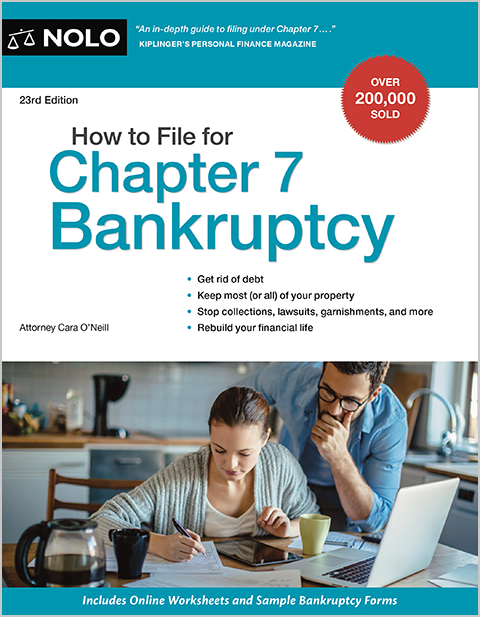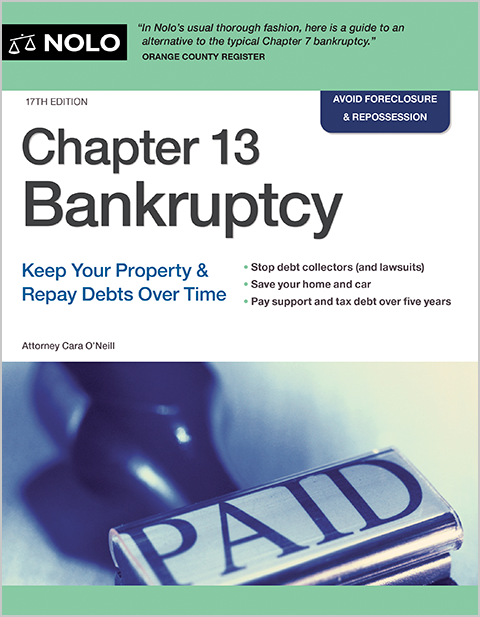If you file for bankruptcy more than one time in a year, the automatic stay is shortened or doesn't go into effect.
When you want creditors to stop harassing you, filing for bankruptcy can do the trick. The automatic stay immediately stops collection activities, such as telephone calls, foreclosures, and lawsuits. However, multiple filings in quick succession suggest that the filer is manipulating the bankruptcy system. To prevent abuse, people who file repeatedly must prove they're filing in good faith before receiving complete protection of the automatic stay.
How the Automatic Stay Works
The automatic stay is put in place without question when a debtor files for bankruptcy for the first time. It stops most creditor collection actions and remains in place until the filer receives the debt "discharge," which erases qualifying debt, or until the bankruptcy case ends for another reason.
Creditors also benefit from the automatic stay. The debtor's property remains in a bankruptcy estate controlled by the bankruptcy trustee responsible for the case, keeping it out of the reach of other creditors. The stay allows the trustee time to review the property and distribute funds according to bankruptcy law, helping ensure that creditors don't obtain a larger share than they're entitled to.
How Repeat Bankruptcy Filings Affect the Automatic Stay
Whether the automatic stay will attach and how long it will last depends on how many times the debtor filed in the past year.
- Typical stay. A debtor who hasn't filed for bankruptcy during the following year is entitled to the automatic stay without limitations.
- 30-day stay. If the debtor filed one bankruptcy case within the previous year, the stay will last 30 days.
- No stay. If the debtor filed two or more cases during the last year, the court won't put the automatic stay in place.
A debtor who receives less than the typical stay can ask the court to extend the stay's protection. The bankruptcy court will grant the motion when the filer presents proof of a good-faith bankruptcy filing.
Extending the Automatic Stay After Repeat Bankruptcy Filings
Before the court grants your automatic stay request, you'll need to do the following:
- Prepare a motion explaining why your filing isn't in bad faith.
- Set the motion hearing date no more than 30 days after your bankruptcy filing date.
- Timely serve the creditors, the trustee, and the U.S. Trustee with your motion.
If you run into a time constraint, your attorney might be able to obtain an "Order Shortening Time," which allows you to provide less notice than is usually required.
Preparing a Request After Losing the Automatic Stay
When evaluating your request to grant or extend the stay, the court will presume initially that your filing is in bad faith. To win, you'll need to convince the court that the case dismissal was due to some reason other than a fault of your own.
Example. Suppose the court dismissed your case because you failed to amend your bankruptcy petition after the bankruptcy trustee noticed that the name on your bankruptcy petition didn't match your driver's license and Social Security card. If you adjusted the paperwork, but your attorney forgot to file it, you'd likely win the motion. You didn't cause the error.
Example. Suppose the court dismissed your case because you missed the 341 meeting of creditors. As part of your motion, you include a declaration (statement signed under penalty of perjury) from your doctor explaining that you were admitted to the emergency room the night before and remained in the hospital for an extended period. The court would likely believe you had no way to inform the bankruptcy trustee that you couldn't appear and grant your motion.
What Would Be Considered Bad Faith Repeat Bankruptcy Filings?
If your filing behavior appears to be an attempt to manipulate the bankruptcy system or prevent valid creditor payment, the judge will deny your motion. For example, one of the benefits of bankruptcy is that it efficiently stops foreclosure, eviction proceedings, and other creditor actions. Some filers repeatedly file and dismiss bankruptcy cases for no other reason than to delay such proceedings. The court looks for such cases.
Here's what a bad-faith case might look like.
In a previous Chapter 13 bankruptcy, a creditor asked for permission to proceed with foreclosure by motioning to lift the automatic stay. However, the debtor dismissed the case before the court could hear the creditor's motion. It would likely be bad faith for the debtor to file another Chapter 13 case to stop foreclosure again. These cases are considered bad faith because of the significant harm a creditor can suffer due to the delays, especially given that debtors commonly use other stalling techniques between bankruptcy filings.
Need More Bankruptcy Help?
Did you know Nolo has made the law accessible for over fifty years? It's true, and we wholeheartedly encourage research and learning. You can find many more helpful bankruptcy articles on Nolo's bankruptcy homepage. Information needed to complete the official downloadable bankruptcy forms is on the Department of Justice U.S. Trustee Program.
However, online articles and resources can't address all bankruptcy issues and aren't written with the facts of your particular case in mind. The best way to protect your assets in bankruptcy is by hiring a local bankruptcy lawyer.

